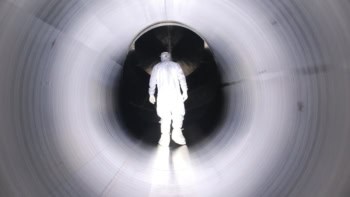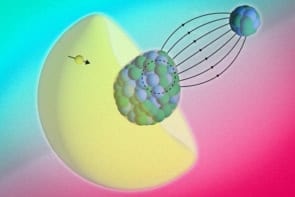The most accurate measurement yet of the mass of the antiproton - the antimatter counterpart of the proton - has been announced by the ASACUSA collaboration. Japanese and European physicists joined forces at the antiproton decelerator at CERN to establish that the proton and antiproton charges and masses agree to within six parts in 100 million (M Hori et al 2001 Phys. Rev. Lett. to appear).

The ASACUSA – atomic spectroscopy and collisions using slow antiprotons – experiment measures the mass of antiprotons by monitoring the decay of ‘antiprotonic’ helium, in which an electron is replaced by an antiproton. The Antiproton Decelerator fires a beam of antiprotons into a chamber of helium gas, which is cooled to about 6 kelvin. Most of the antiprotons annihilate as soon as they enter the helium, but a tiny fraction of them produce about half a million ‘antiprotonic’ helium atoms.
As soon as the antiprotonic helium atoms are created, lasers excite them into a higher energy state from which the antiprotons annihilate, releasing energetic particles. These particles leave easily detectable trails of light known as Cherenkov radiation. The laser frequency at which this radiation appears reveals the mass and charge of the antiproton.
“We show that if there is any difference between the charges and masses of the proton and the antiproton, it can’t be more than about six parts in a hundred million”, group member John Eades told PhysicsWeb. “That’s pretty tiny, but we haven’t finished yet – it is just a challenge to do even better in future experiments”. The mass of a proton is 1.007276 atomic mass units.
The Standard Model of particle physics dictates that particles must have the same mass as their antiparticles. Any discrepancy in their masses would force theorists to rethink the model. However, a difference between particle and antiparticle masses could account for the excess of matter in the universe today. “The standard model is not in trouble”, emphasises Eades, “but our new job is to reduce the limit on any possible difference still further”.



